Last Sunday, I caught the last day of the Toronto Outdoor Art Fair. As someone that doesn’t like crowds, I had to force myself to go - but I’m glad I did. There were a lot of really interesting artists there doing some unique stuff. Here’s a few highlights from the TOAF this year:
There was a massive crowd and hundreds of tents in Nathan Phillips Square. I noticed on their website that the TOAF has tours you can join for free, but I wasn’t organized enough to sign up for one.
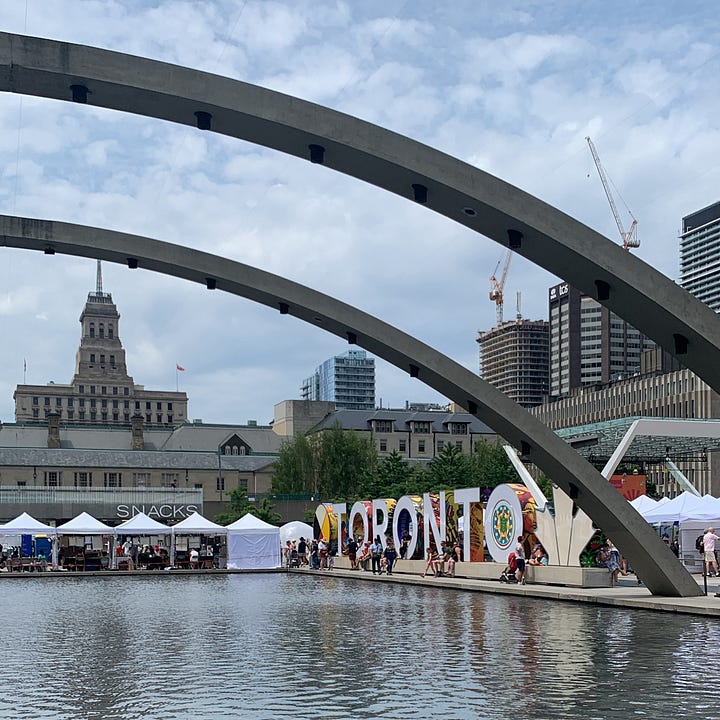
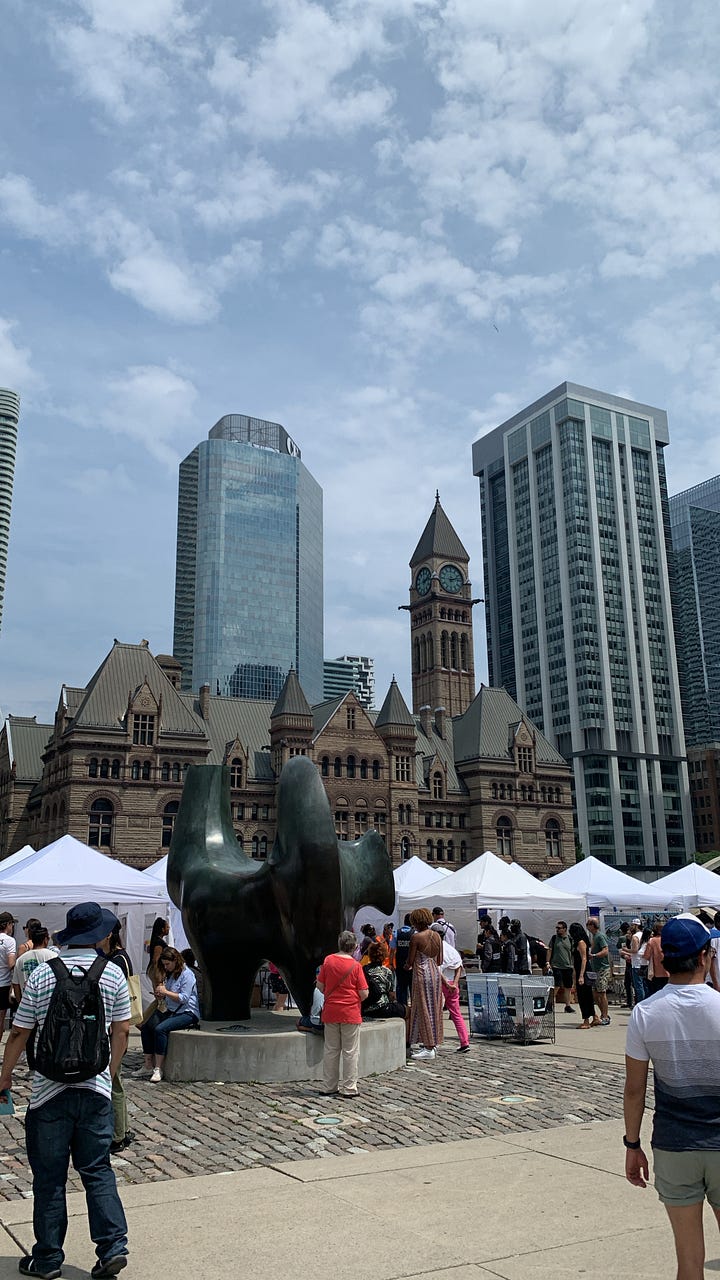
Béatrice Eberhard's booth was the first one I stopped at - her work struck me, because it invites you to read the landscapes of text even though the text itself is illegible. She explained to me that she intentionally avoided legibility in the snippets of text she uses, using different languages and paper cutting techniques to foreground the aesthetic value of the words rather than their linguistic meaning.
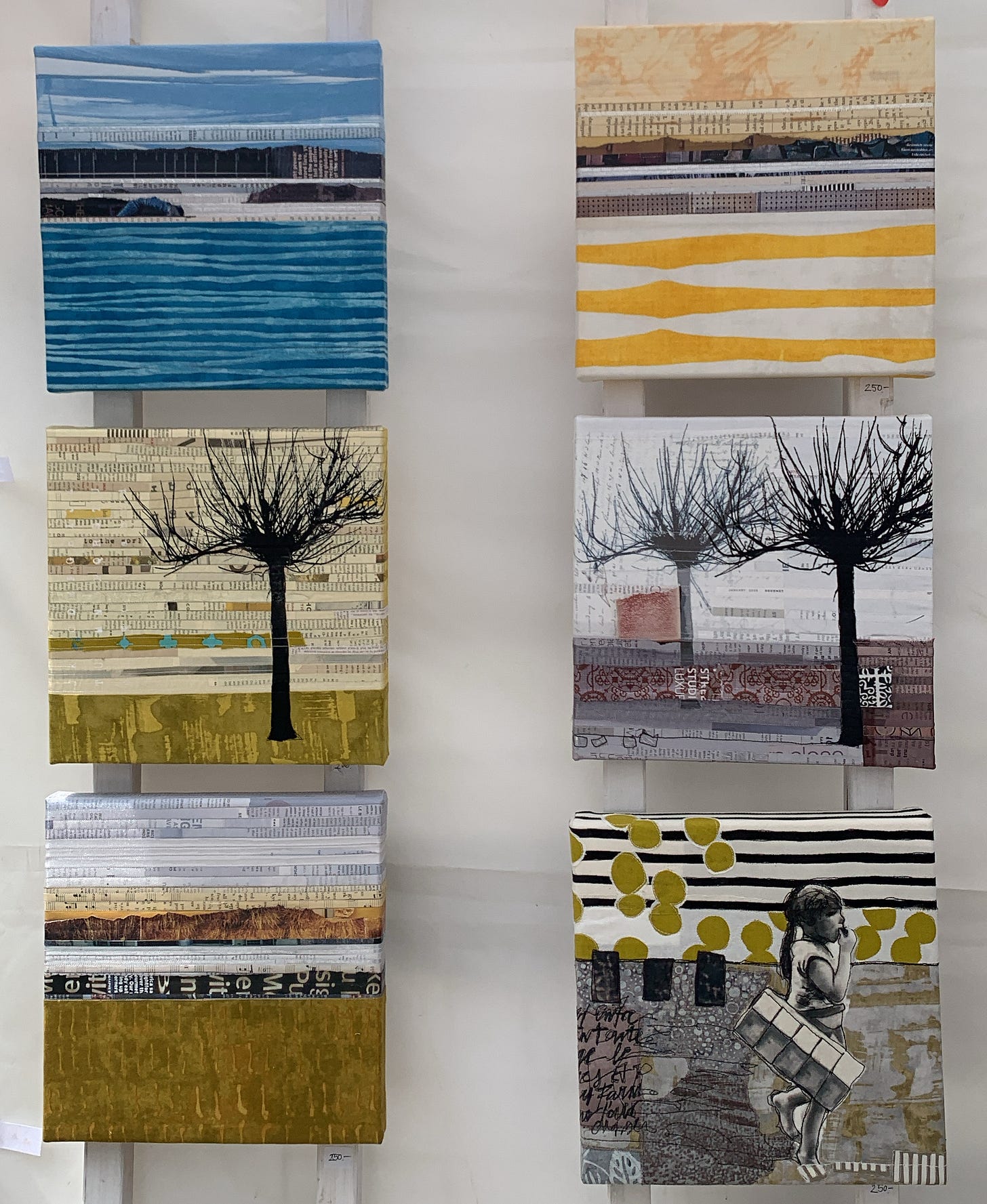
When I look at her work, I think of of murmurs that you can barely hear in the distance, or all of the words spoken in a place that have faded in our collective memory.
The next thing that stopped me was this painting of a cat:
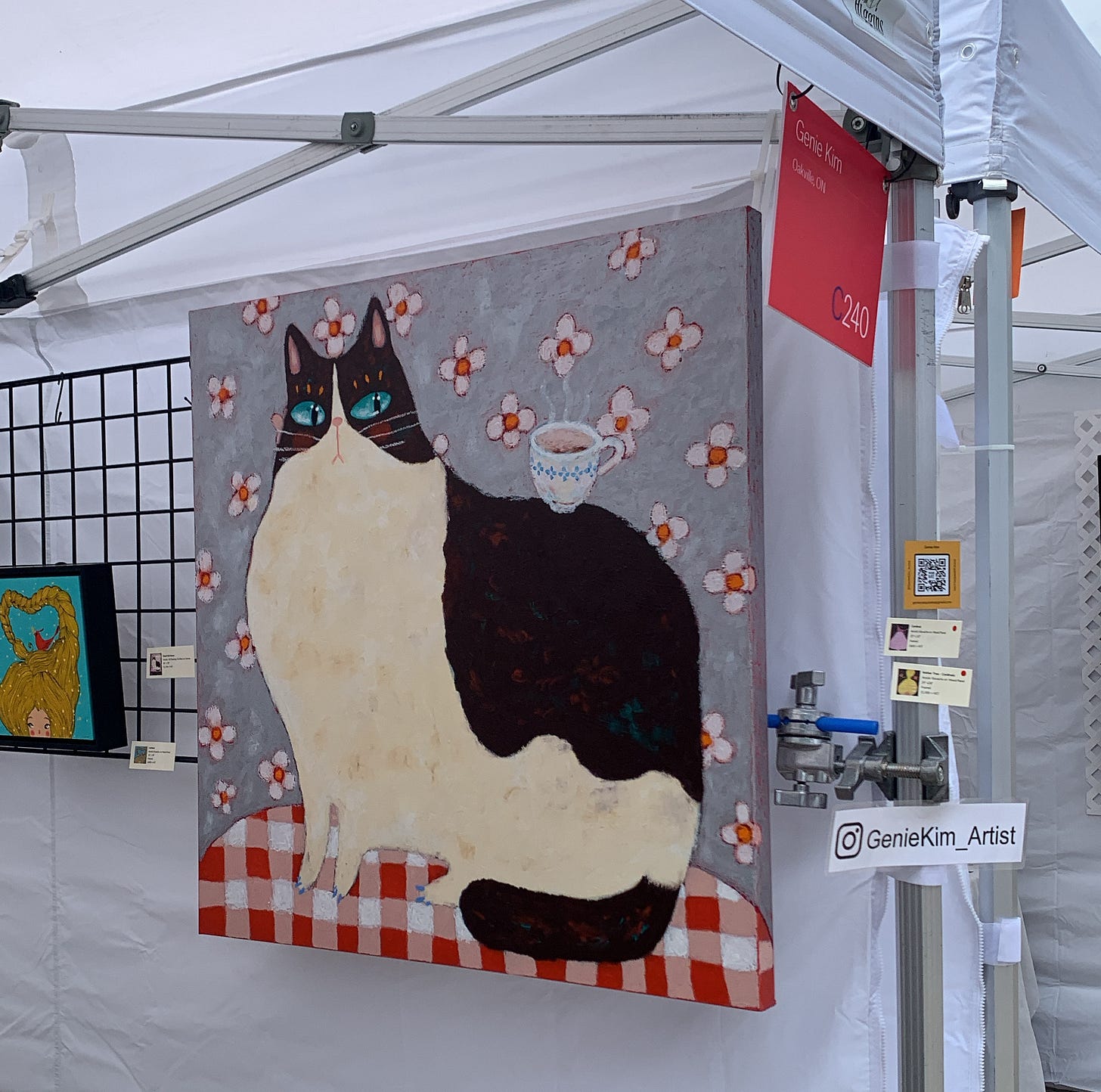
Its eyes were what stopped me; I also love its bulk and tiny little paws with inexplicably blue claws. The artist’s name is Genie Kim – if you take a look on her website, she has other drawings of characters with similarly expressive side-eye glances. Also, I think "summon me" is the best copy I've seen linking to a website contact page.
Walking around the outskirts of the fair, past a drink booth with the very literal name “Drink From a Fruit,” I stopped at a few other booths:
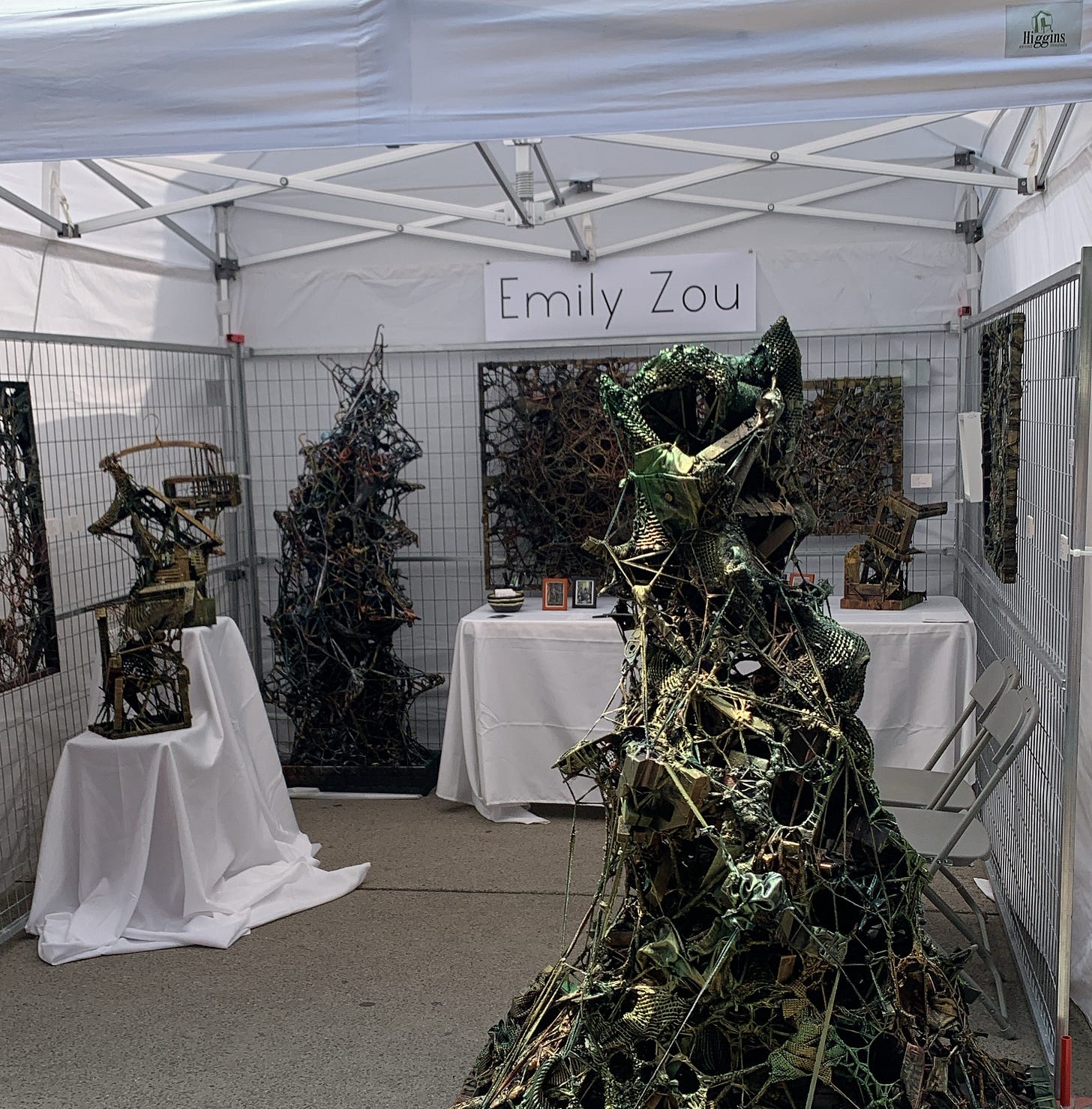
Emily Zou wove together found objects and then painted them to create these sculptures, which to me have an amorphous quality that makes them look like spiderwebs, topographical maps, and something caught in a fishnet at the same time. When you get up close to some of them, you start to make out individual objects: spoons, hangers, wooden frames. Her website also has an interesting psychological diary of images that together suggest a narrative - but like her sculptures, you have to look closely to piece together its elements.
The next booth that caught my eye was Hugo Cantin’s:
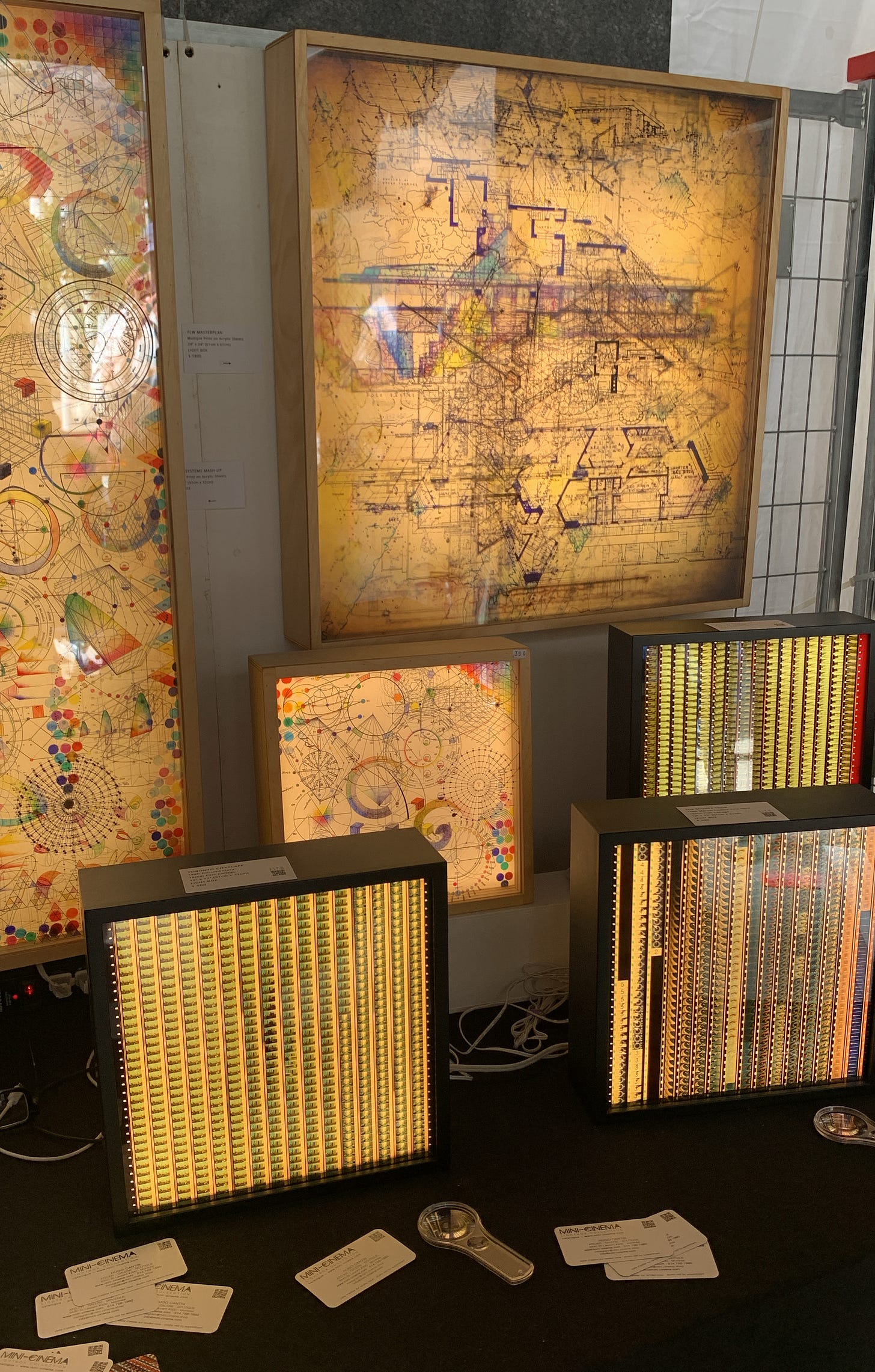
On his website, his art is described as "time on a flat surface," and in person each lightbox does feel like a portal to another time – he even had little magnifying glasses so visitors could stop and look more closely at each one. Another neat thing: he also makes stock videos from the vintage reels that you can find at Pond5.
At first glance, I thought Maureen Faith O'Connor's photos were photoshopped:
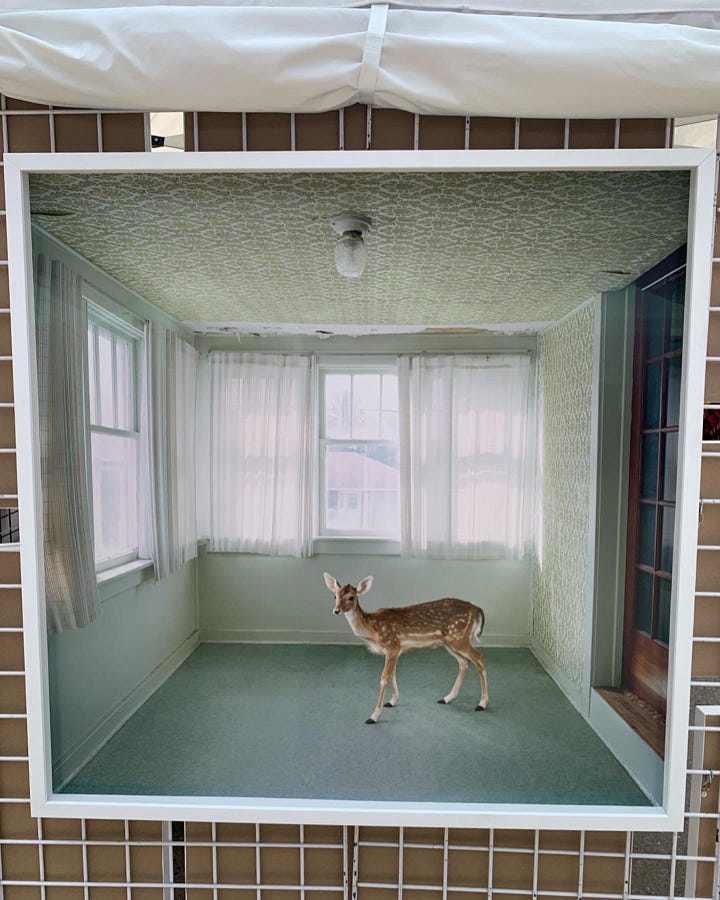
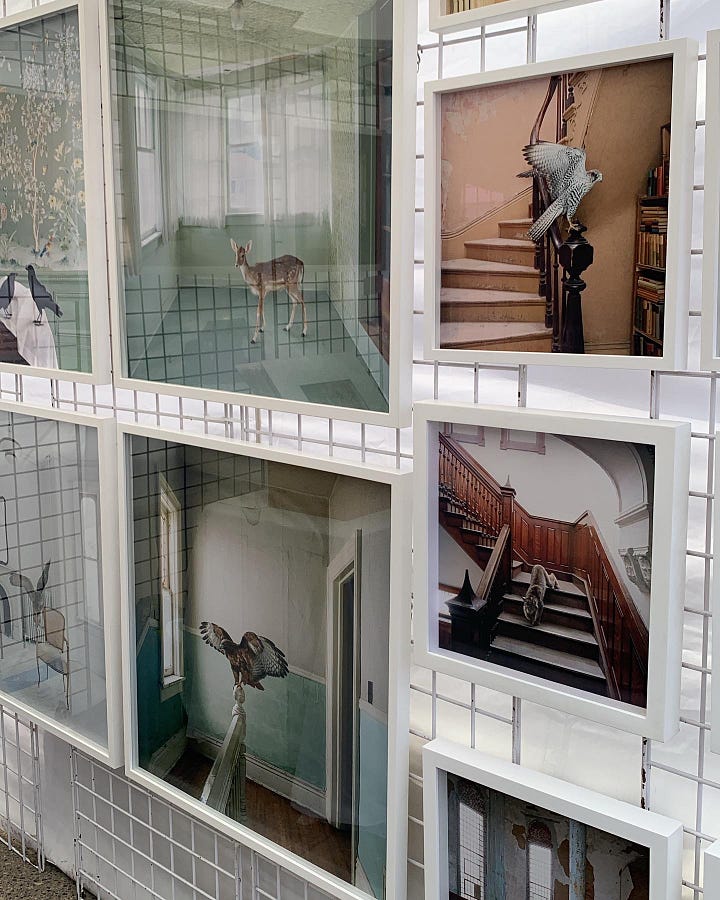
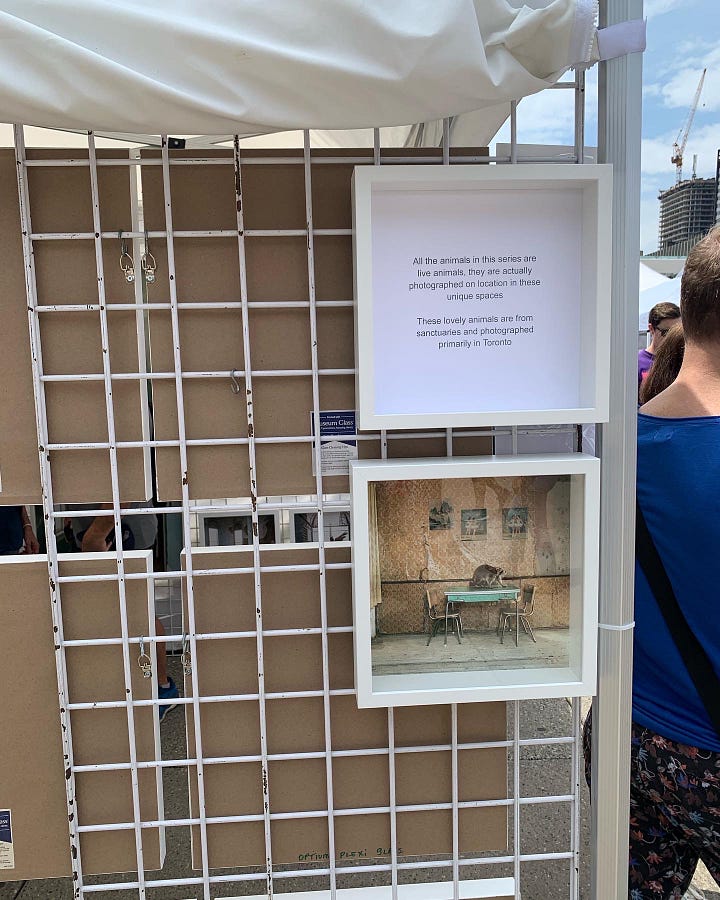
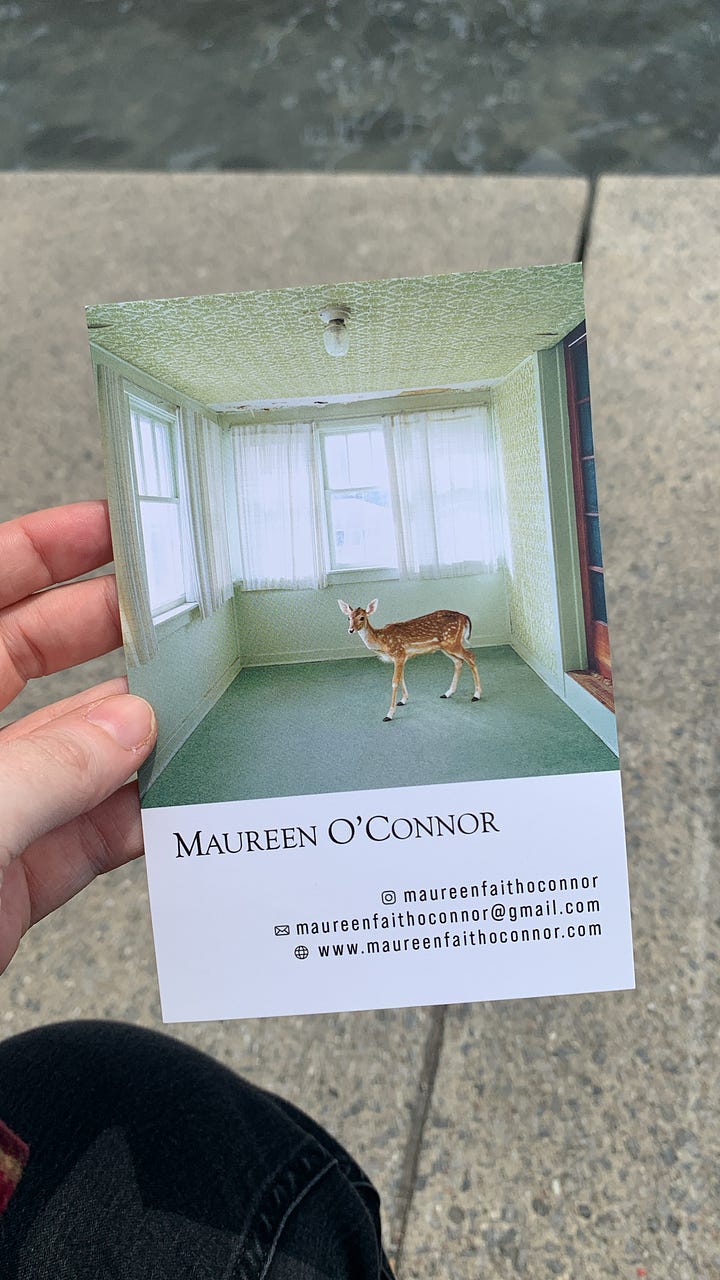
But each one is a picture of a real animal from a wildlife sanctuary, in locations chosen specifically for each one. Her assistant at the booth said that each one had a handler that helped set up the photoshoot (I wish I could see the blooper reel from the raccoon one). I love the surrealism of wild animals in human spaces; they add a touch of brightness to what would otherwise feel like a bleak or melancholy picture.
There was a family-friendly booth in the centre of the fair with a bunch of kids doing arts and crafts at a table, and a voting booth with tubes that made the votes visual in kind of a fun way (I’m assuming this is also a recycling initiative of some kind).
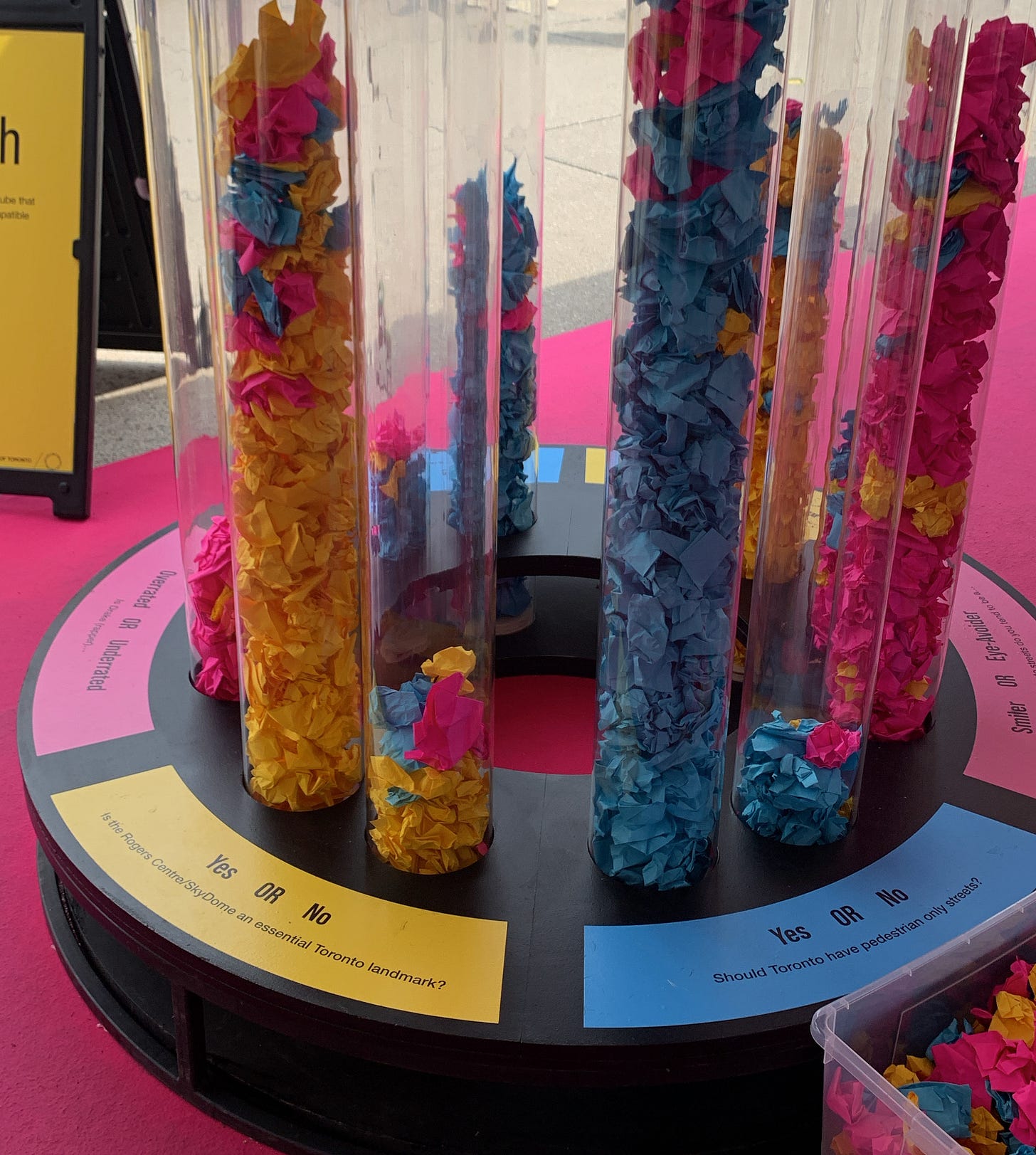
Winding my way through the other side of the TOAF, I was also struck by Emma Enright's tapestries, because they reminded me of the West Coast (where I grew up):
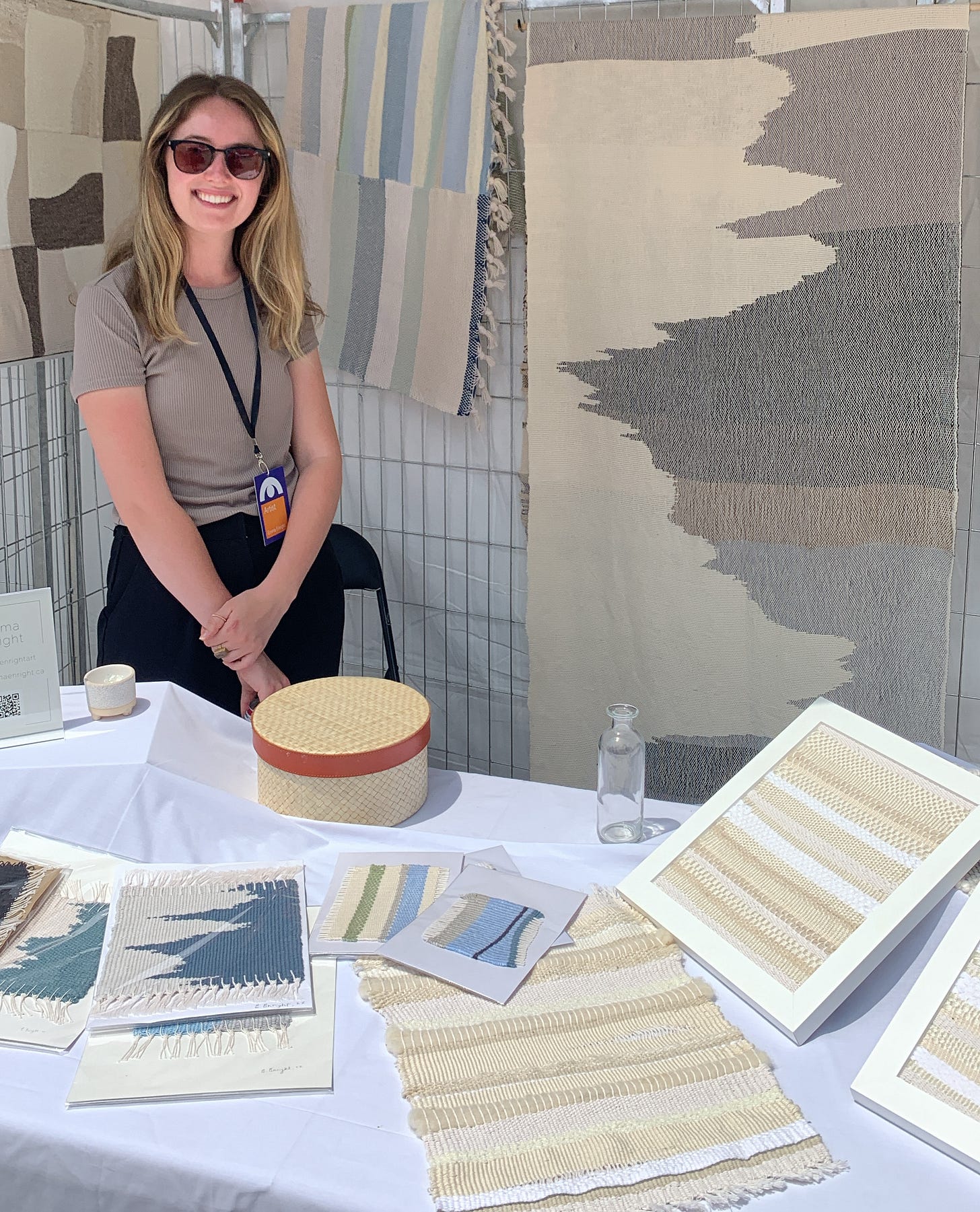
I think we all have colours and textures that remind us of home, wherever that is, and Emma's tapestries took me back to my best memories of the beaches in Tofino (her entire booth was a cozy summer afternoon). Also she was kind enough to let me take her picture! Although to be fair to the other artists I should mention she was the only one I was brave enough to ask. All of her work is handwoven.
Burn Island's booth was full of regular objects - shovels, saws, cameras - with steel sculptural elements:
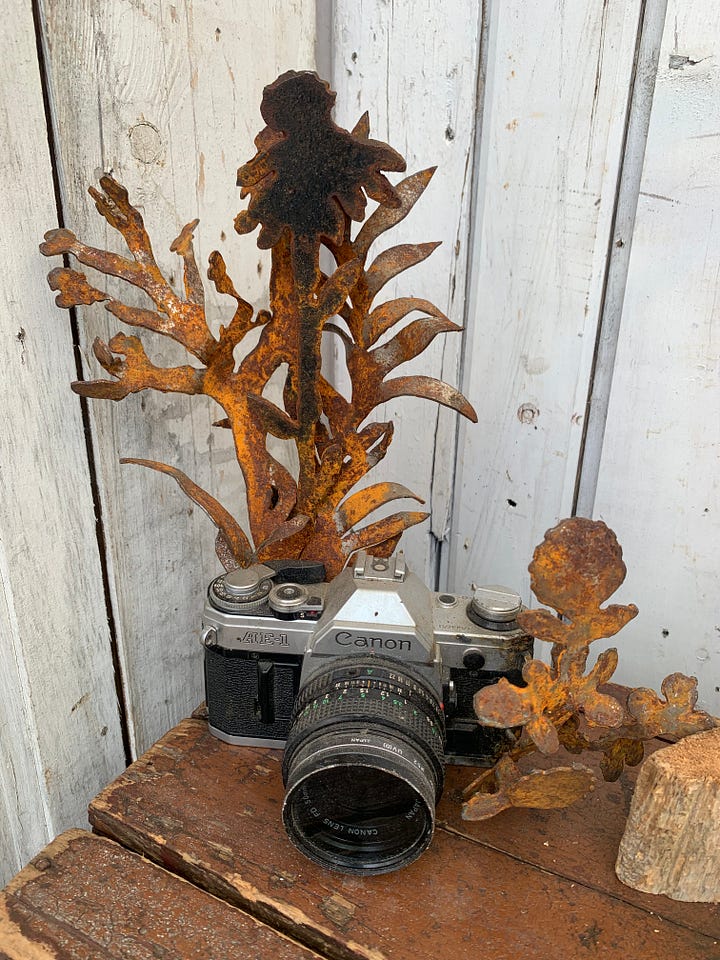
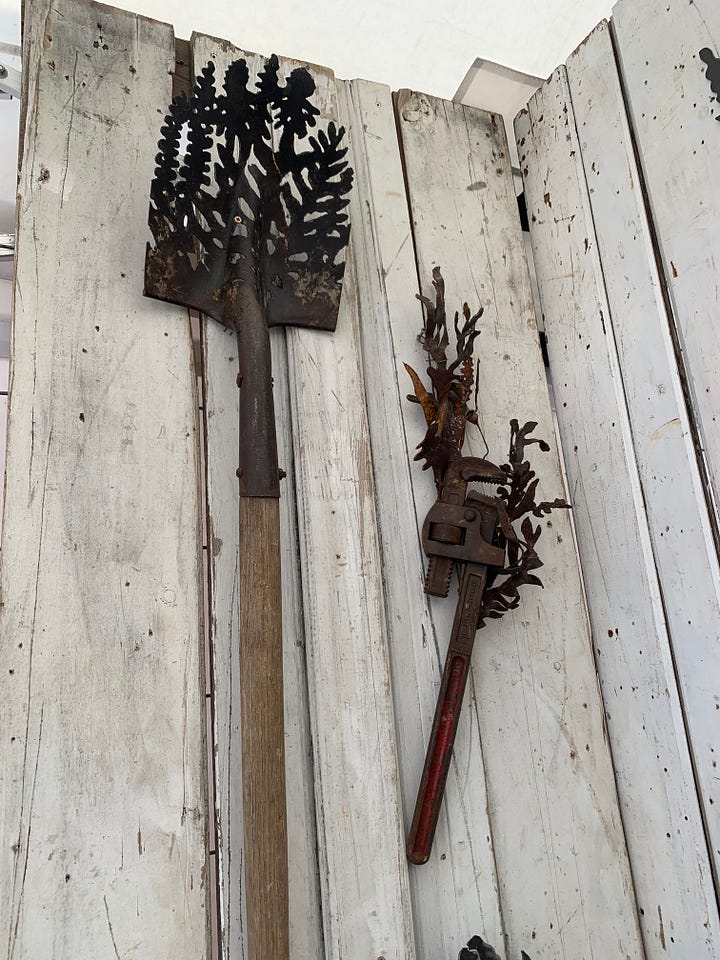
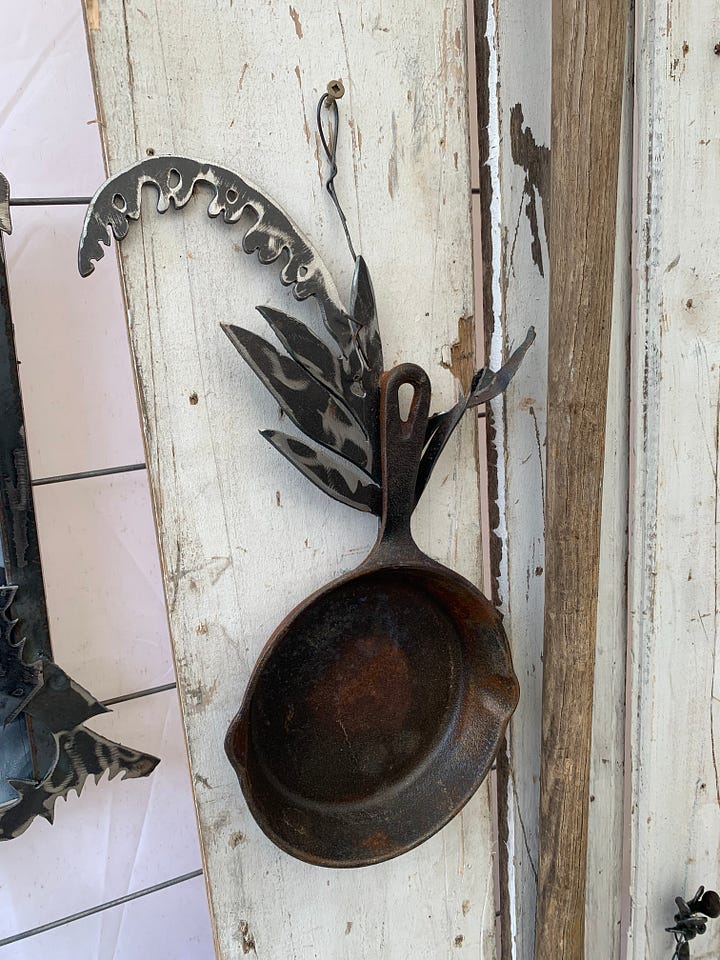
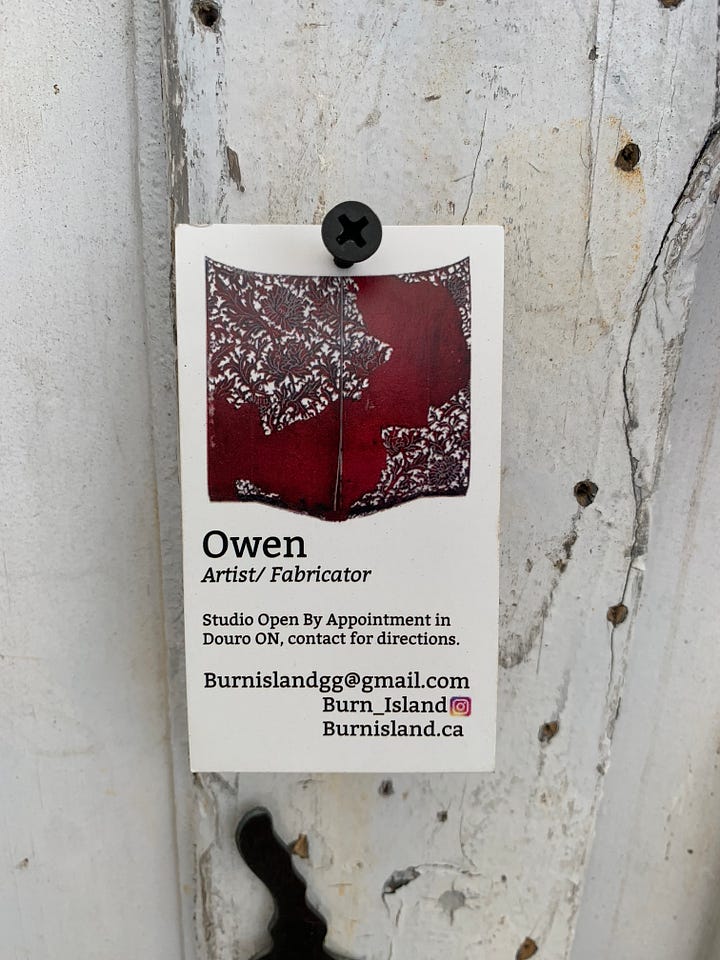
When I stopped to ask him what his art was about, he described it as an exploration of steel as a material, and of art materials as part of our natural environment. He mentioned that some of his friends had started recycling their paint water to avoid introducing pigments (which can be toxic) into the water system. On his Instagram, he mentions he does custom sculptures with people's heirloom objects which I thought was really cool:
“For these “overgrown” pieces I tap into the aged steel of the object and bring it back to its primordial liquid state to add “new growth” allowing it to be reinterpreted as an art object now that its utilitarian purpose has been laid to rest. The overgrown plants are based on wildflowers from the area where the object came from”
For anyone interested in browsing, the TOAF has an online gallery and curated collections – but I think I’ll visit again in person next year, and maybe even book a tour.



